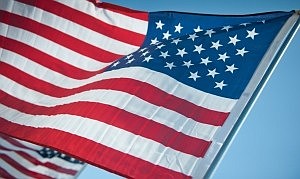- November 27, 2024
-
-
Loading

Loading

The following is adapted from a press release from the U.S. Census Bureau:
Veterans Day originated as “Armistice Day” on Nov. 11, 1919, the first anniversary of the end of World War I. Congress passed a resolution in 1926 for an annual observance, and Nov. 11 became a national holiday beginning in 1938.
President Dwight D. Eisenhower signed legislation in 1954 to change the name to Veterans Day as a way to honor those who served in all American wars.
The day honors military veterans with parades and speeches across the nation. A national ceremony takes place at the Tomb of the Unknowns at Arlington National Cemetery in Virginia.
BY THE NUMBERS
Veterans
21.8 million
The number of military veterans in the United States in 2010.
1.6 million
The number of female veterans in 2010.
2.4 million
The number of black veterans in 2010. Additionally, 1.2 million veterans were Hispanic; 265,000 were Asian; 156,000 were American Indian or Alaska Native; 28,000 were Native Hawaiian or Other Pacific Islander; and 17.5 million were non-Hispanic white. (The numbers for blacks, Asians, American Indians and Alaska Natives, Native Hawaiians and Other Pacific Islanders, and non-Hispanic whites cover only those reporting a single race.)
9 million
The number of veterans 65 and older in 2010. At the other end of the age spectrum, 1.7 million were younger than 35.
When They Served
7.6 million
Number of Vietnam-era veterans in 2010. Thirty-five percent of all living veterans served during this time (1964-1975). In addition, 4.8 million served during the Gulf War (representing service from Aug. 2, 1990, to present); 2.1 million in World War II (1941-1945); 2.6 million in the Korean War (1950-1953); and 5.5 million in peacetime only.
49,500
Number of living veterans in 2010 who served during the Vietnam era and both Gulf War eras and no other period.
Income
$35,367
Annual median income of veterans, in 2010 inflation-adjusted dollars, compared with $25,605 for the population as a whole.